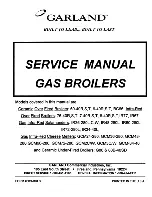
Pre-installation
Greenstar i System
ErP
- 6 720 806 945 (2015/07)
20
4.6
Condensate discharge
4.6.1
Appliance siphonic condensate trap
The appliance has a large capacity siphonic condensate trap reducing
the risk of condensate discharge freezing up in prolonged cold
temperatures.
Like the CondenseSure siphon accessory, the expanded siphonic
operation discharges every 15 to 20 minutes, resulting in:
• Increased velocity and flow rate.
• With only 3 to 4 siphonic actions per hour, the condensate pipework
is empty for longer.
• Eliminated freezing potential.
– For a 48 hour period at -15 °C provided the installation
parameters listed below are adhered to.
To maximise the effectiveness of this product the installer should:
• Keep the external pipework as short as possible and not exceed 3m.
– External run pipe diameter should be increased to a minimum of
32mm.
• Ensure a fall of at least 2.5° over horizontal sections.
• Minimise the number of bends and connectors.
• Remove burrs after cutting pipe.
• Remove surplus solvent from the interior of the pipe.
4.6.2
Condensate pipe work
4.6.3
Internal connections
In order to minimise risk of freezing during prolonged cold spells, the
following methods of installing condensate drainage pipe should be
adopted, in order of priority.
Wherever possible, the condensate drainage pipe should be routed and
terminated so that the condensate drains away from the appliance under
gravity to a suitable internal foul water discharge point such as an
internal soil and vent stack. A suitable permanent connection to the foul
waste pipe should be used.
Fig. 11 Disposal to soil vent stack
Alternatively if the first option is not possible an internal kitchen or
bathroom waste pipe, washing machine waste pipe etc. can be used.
Ensure that the condensate drain pipe is connected “down stream” of
the waste trap.
Fig. 12 Disposal to a waste pipe
NOTICE:
▶ Where a new or replacement appliance is being
installed, access to an internal “gravity discharge”
point should be one of the factors considered in
determining appliance location.
▶ The condensate pipe must be nominally
22mm Ø plastic pipe.
▶ The condensate pipe work must fall at least 52mm
per metre towards the outlet and should take the
shortest practicable route.
▶ Ensure there are no blockages in the pipe run.
NOTICE:
Unheated internal areas.
Condensate discharge may freeze in areas of prolonged
cold temperatures.
▶ Internal pipe runs in unheated areas such as lofts,
basements and garages should be treated as
external runs.
Key to condensate illustrations, figures 11, 12 & 13
1
Condensate discharge from appliance
2
Soil and vent stack
3
Minimum 450mm and up to three storeys
4
Visible air break at plug hole
5
Sink or basin with integrated overflow
6
75mm sink waste trap
7
Condensate pump
*
Condensate trap of 206mm already incorporated into the
appliance
Table 11 Key to Internal condensate disposal methods
2
22mm Ø
1
3
6720644744-06.3W
o
100mm
75mm
min.
4
5
6
1
22mm Ø
6720644744-07.3W
o
















































